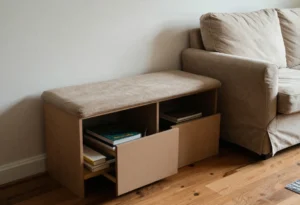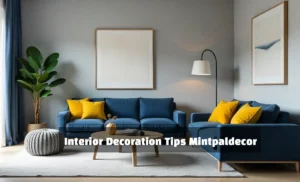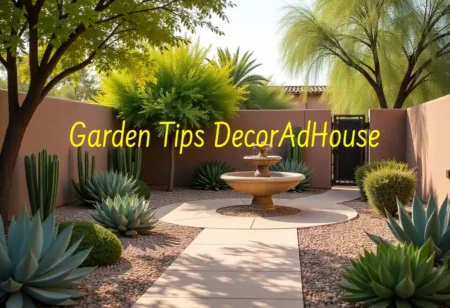Water gardens are beautiful and tranquil additions to any outdoor space. The gentle sounds of trickling water combined with the vibrant colors of aquatic plants create an inviting oasis for relaxation. Beyond aesthetics, water features also provide habitat for birds, dragonflies, frogs, and other wildlife. Read on to explore the many benefits of ponds and water features and how to design, build, and maintain your own water garden paradise.
Water gardens, also known as aquatic gardens, are designed landscapes that incorporate bodies of water such as ponds, waterfalls, fountains, or streams. The water features are combined with lush greenery, flowering aquatic plants, rocks, and decor to create a stunning and soothing environment.
Water features have been a part of garden design and landscaping throughout history, with examples found in ancient Persian gardens to classical Chinese gardens. Incorporating the elemental beauty of water into the landscape adds a sense of tranquility and natural wonder. The auditory stimulation of moving water has been shown to reduce stress and promote relaxation.
This article provides an overview of the many benefits of adding ponds and water features to your garden. We’ll explore the most popular types of water gardens, key steps for designing and constructing your own, and tips for proper maintenance. By the end, you’ll have the knowledge to create a gorgeous aquatic oasis right in your backyard.
Benefits of Water Gardens
There are many advantages to incorporating ponds and water elements into your garden or outdoor living space:
Enhances the Beauty of the Garden
The reflective qualities of water add shimmer and movement to the landscape. Aquatic plants come in a rainbow of colors – greens, reds, oranges, and purples, that add vibrant pops of color. The texture and shapes of lily pads, grasses, and cascading falls contrast beautifully with the smooth glassy surface of water. Overall, water features add eye-catching visual interest and depth to gardens.
Provides a Habitat for Wildlife
Ponds create an attractive habitat for many types of wildlife, particularly birds, dragonflies, frogs, turtles, and fish. The addition of a pond brings in beneficial insects and critters that add life and vibrancy to the environment. It’s always exciting to spot new creatures visiting or making a home in your water feature.
Promotes Relaxation and Mental Well-Being
The tranquil sounds of moving water produce a calming environment ideal for relaxation. Studies show that being around water reduces cortisol levels, heart rate, and blood pressure. The peaceful atmosphere enhances overall mental well-being and provides a natural escape from daily stress.
Increases Property Value
Water features often boost a property’s value and appeal to buyers. Surveys of real estate agents found that installing a pond or water garden resulted in an average increase of 7-15% in the home’s value, with some reporting increases up to 28%. Adding a professionally installed water feature yields a particularly high return on investment.
Types of Water Gardens
There are many styles of water gardens to choose from depending on your space, desired features, and budget:
Ponds
Garden ponds are the most popular and versatile aquatic feature. Ponds can be large or small and take any shape – oval, kidney-shaped, or freeform. They typically contain aquatic plants and fish. Koi ponds are ponds designed specifically for keeping Koi fish. The minimum recommended size for Koi is 1000 gallons as they require more swimming room.
Waterfalls
The cascading sound of waterfalls is soothing and brings the element of movement. Waterfalls can be incorporated into ponds or stand alone as “dry” waterfalls into a rock garden. The water can flow gently or be designed for dramatic effect depending on the height and water volume.
Fountains
Fountains come in endless shapes and sizes from simple tiered fountains to elaborate statues with shooting jets and streams. Their bubbling and splashing add animated texture. Fountains require minimal water volume so they work well in smaller gardens.
Pondless Waterfalls
Pondless waterfalls consist of a hidden basin or tank covered by rocks where a submerged pump pushes the water up through a waterfall. The end result looks like a natural spring. They are low maintenance since they don’t require aquatic plants or fish.
Aquatic and Koi Ponds
Larger ponds supporting aquatic plants and fish have added design considerations. Koi ponds require a minimum depth of 2-3 feet deep while aquatic ponds are typically 1-2 feet deep with sheltered areas. Aquatic ponds also incorporate filtration systems, rocks, underwater ledges, and gravel bottoms.
Designing Your Water Garden
Careful planning is needed to create a balanced ecosystem to support plants, fish, and other aquatic life. Follow these tips when designing your water oasis:
Choosing the Right Location
- Select a level spot with good drainage and full or partial sun exposure for optimal plant growth.
- Make sure there are power connections nearby for pumps and filtration systems.
- Consider views from seating areas or the home to maximize enjoyment of the feature.
- Ensure adequate space for pond and waterfall basin, substrate, and surrounding planting areas.
Selecting the Right Size and Shape
- Size impacts maintenance, so larger is not always better. Recommended surface area for beginners is 100-200 sq ft.
- Oblong, oval, or kidney bean shapes complement most gardens and spaces.
- Incorporate varied depths from 1-2 feet around the edges to 3-5 feet in the center.
- Allow for a minimum of a 10-15 ft length waterfall for visual impact.
Planning for Filtration and Circulation
- Ponds and water features require filtration to maintain clean water and health of inhabitants.
- Submersible pump size should be capable of filtering total water volume at least once per hour.
- Incorporate skimmers, biological filters, gravel beds, aquatic plants, and algae scrubbers to filter particles and debris.
- Strategically place inlets and outlets to create proper water circulation.
Choosing the Right Plants and Aquatic Life
- Select native plants suited to zone, sunlight conditions, and water depths.
- Oxygenators like hornwort are essential, while marginal plants like irises add color at the edges.
- Consider hardy aquatic life like Koi, goldfish, or freshwater shrimp. Limit fish to 1 inch per 10 gallons.
- Start with just a few plant varieties and fish to establish a healthy ecosystem before expanding.
Building Your Water Garden
Constructing ponds and waterfalls requires careful preparation and step-by-step installation. Here are the key phases:
Preparing the Site
- Mark the outline of the pond and waterfall area with spray paint or stakes.
- Remove any sod, plants, roots, and debris from the area.
- Level the ground and add amendments like clay or bentonite to soil to prevent seepage.
Excavating and Lining the Pond
- Dig the pond to the required shape and depths, creating gradually sloping shelves.
- Add protective underlay and line the bottom with pond liner rated for outdoor use.
- Conceal liner edges with rocks or gravel, allowing some slack to prevent tearing.
Installing Filtration and Circulation Systems
- Place pump in a protective cage at the lowest part of the pond.
- Connect tubing, filter media like bio-balls, UV clarifier, and fountain/waterfall fixtures as desired.
- Check for leaks and prime pump to test it is functioning before adding water.
Building the Waterfall
- Dig channel for waterfall and line with rubber liner allowing for spillway rocks at edge.
- Conceal liner with natural rocks and pebbles, keeping spray bar or waterfall outlet unobstructed.
- Adjust pump flow and add accent rocks to achieve the desired waterfall effect.
Adding Plants and Aquatic Life
- Gradually fill pond and allow water to settle before introducing plants and fish.
- Plant aquatic plants in containers or plastic mesh along the shelves and edges.
- Introduce hardy fish and shrimp species best suited for garden ponds and climatic conditions.
- Let ecosystem establish for 2-4 weeks before adding more plants or animals.
Maintaining Your Water Garden
While water features bring tranquility, they do require regular maintenance and monitoring to stay healthy. Here are key tasks:
Regular Cleaning and Maintenance
- Inspect pumps and filters frequently and clean out debris or algae buildup clogging the system.
- Use rakes, nets and pond vacuums designed for water use to remove fallen leaves and accumulated organic matter.
- Prune back vegetation when overgrown and remove dead or dying plants to prevent excess nutrient leaching.
Monitoring Water Quality
- Test pH, ammonia, nitrate, and oxygen levels with test kits. Ideal pH is 7.2-7.6. Ammonia and nitrates should be low or undetectable.
- Ensure water temperature stays under 28°C/82°F in summer months. Add ice bottles or water chillers.
- Use beneficial bacteria or enzyme products to help control ammonia and nitrate levels. Target oxygen levels of at least 6-8 ppm.
- In extreme heat, partially draining the pond and refilling can help reset overheated water.
Managing Aquatic Life
- Do not overstock fish and plants, which can throw off the ecosystem balance.
- Remove dead fish and excess plant matter promptly to prevent decomposition which harms water quality.
- Introduce algae-eating snails or shrimp if algae growth becomes excessive.
- Use aquarium nets to periodically thin out pond snails which can overpopulate.
Winterizing Your Water Garden
- Tropical aquatic plants should be brought indoors before first frost. Trim back hardy plants to just above the water line.
- Stop feeding fish once water temperature drops below 10°C/50°F so their metabolism slows.
- Install a pond de-icer to prevent surface ice expansion which can damage pumps and plumbing. Maintain a hole in ice for gas exchange.
- Clean filters before removing pumps and tubing for winter storage.
Tips for Building and Maintaining your Water Garden
Follow these key guidelines to create a healthy, eco-friendly water sanctuary:
Use Eco-Friendly Materials
- Choose natural rocks, stones and aggregates rather than concrete when shaping ponds.
- Select liners made from recycled rubber, EPDM, or PVC instead of plastic sheeting which deteriorates over time.
Choose Native Plants and Aquatic Life
- Research native water plants, fish, and invertebrates well-adapted to the climate. Avoid non-native invasive species.
- Group plants with similar water, sun and soil preferences together for healthier growth.
Use Energy-Efficient Filtration Systems
- Utilize solar-powered pumps and low wattage energy efficient pumps when possible.
- Position pump intakes away from prevailing winds and water returns on the opposite side to maximize circulation.
Regularly Monitor Water Quality
- Test pH, ammonia, nitrates, oxygen and temperature levels weekly or bi-weekly to quickly catch any imbalances.
- Increase aeration and adjust pH gradually when needed to maintain safe parameters.
Create a Natural-Looking Waterfall
- Use layered rock formations and combine stone shapes and sizes.
- Maximize aesthetic appeal by concealing piping, tubing, and mechanical equipment.
- Top with decorative gravel and aquatic plants like creeping Jenny for a seamless look.
Conclusion
The addition of ponds, waterfalls and fountains brings the tranquility of water into your garden. Water features provide a beautiful focal point while attracting wildlife and creating a relaxing soundscape. With proper site preparation, construction, plant selection and routine maintenance, you can enjoy your water sanctuary for years to come. The efforts to build and care for your water garden will be rewarded by the increased beauty, interest, and serenity it brings to your outdoor living space. Close your eyes and listen to the gentle cascade of water – your new garden oasis awaits!



